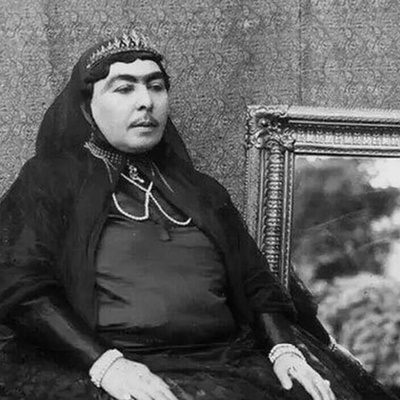Hajj al-Tamattu' is one of the three types of Hajj in Islam. It is obligatory for those whose place of residence is more than **16 farsakhs (approximately 48 miles or 77 kilometers)** away from Mecca. Stay with us for more details.

Entering the state of ihram for Hajj is valid from any part of the city of Mecca, even from newly constructed houses within the city limits. However, it is recommended to assume ihram at Maqam Ibrahim or Hijr Ismail.
Hajj al-Tamattuʿ, also known as the Major Pilgrimage (Hajj al-Akbar) and the obligatory pilgrimage, is one of the most important branches of Islam. Muslims who meet the necessary conditions are required to travel to Masjid al-Haram in Mecca, Saudi Arabia, during the first ten days of Dhu al-Hijjah, and perform a series of devotional rituals.
Hajj is divided into three types:
Hajj al-Ifrad
Hajj al-Qiran
Hajj al-Tamattuʿ
Tamattuʿ means enjoyment or benefiting. It is named so because during the interval between performing the ʿUmrah of Tamattuʿ and the Hajj, the previously forbidden acts of ihram become permissible, allowing the pilgrim to enjoy them. Since ʿUmrah al-Tamattuʿ is a part of and connected to Hajj al-Tamattuʿ, they are considered one integrated act in Islamic law. Thus, enjoying previously forbidden acts between the two is viewed as part of the overall Hajj experience.
Hajj al-Tamattuʿ is obligatory for a person termed āfāqī—someone whose residence is more than 16 farsakhs (about 77 kilometers or 48 miles) from Mecca. In a recommended (non-obligatory) Hajj, a person is free to choose any of the three types.
Ihram
Standing (wuqūf) at ʿArafat (4 farsakhs from Mecca)
Wuqūf at Muzdalifah (about 2 farsakhs from Mecca)
Going to Mina and stoning Jamarat al-ʿAqabah
Sacrificing an animal at Mina
Shaving the head or trimming the nails
Tawaf al-Ziyarah (circumambulation of the Kaaba)
Two rakʿahs of prayer after Tawaf
Saʿy between Safa and Marwah
Tawaf al-Nisaʾ
Two rakʿahs of prayer after Tawaf al-Nisaʾ
Spending the nights of the 11th and 12th of Dhu al-Hijjah in Mina, and for some, also the 13th night
Stoning the three Jamarat in Mina on the 11th and 12th (and for some, also on the 13th)
After completing the rituals of ʿUmrah al-Tamattuʿ, one must prepare to perform Hajj al-Tamattuʿ, starting with ihram from Mecca. These thirteen acts, like the five acts of ʿUmrah, are all forms of worship and must be done with sincere intention (niyyah) and solely for the sake of Allah. If intentions are mixed with showing off (riyāʾ), the worship is invalid, and showing off is a major sin.
A person obligated to perform Hajj al-Tamattuʿ cannot change to Qiran or Ifrad, and doing so does not fulfill their duty—unless in cases of necessity such as lack of time or impediments like menstruation in women.
It is recommended to perform non-obligatory (nafl) Hajj in the Tamattuʿ form, even for those who are not āfāqī.
With halq (shaving) or taqsir (trimming), all prohibitions of ihram become permissible except women and perfume. After Tawaf al-Ziyarah, perfume becomes permissible, and after Tawaf al-Nisaʾ, sexual relations become permissible as well.
Intention to perform Hajj al-Tamattuʿ when entering ihram for ʿUmrah
Performing the rituals during the Hajj months (Shawwal, Dhu al-Qaʿdah, and Dhu al-Hijjah)
Performing ʿUmrah and Hajj in the same year
Ihram for Hajj al-Tamattuʿ must be from Mecca, preferably from Masjid al-Haram, specifically Maqam Ibrahim or Hijr Ismail
In Tamattuʿ, ʿUmrah and Hajj are inseparably connected; unlike in Qiran and Ifrad, where ʿUmrah is not obligatory unless due to a vow or similar reason.
In Tamattuʿ, ʿUmrah precedes Hajj; in the other types, ʿUmrah is after Hajj.
In Tamattuʿ, ʿUmrah must occur during Hajj months; not required for the other types.
Both ʿUmrah and Hajj must occur in the same year in Tamattuʿ.
According to most scholars, after finishing ʿUmrah, one cannot leave Mecca unless they re-enter within one month; others consider it only disliked (makruh).
In Tamattuʿ, the miqat (entry point for ihram) for Hajj is Mecca; in the other types, it is one of the five designated miqats or the pilgrim’s home if closer.
For ʿUmrah in Tamattuʿ, the miqat is one of the well-known miqats or a location equivalent to it; for the other types, it varies depending on whether the person resides inside or outside the Haram boundary.
One performing ʿUmrah al-Tamattuʿ stops Talbiyah (labbaik) upon seeing Mecca’s houses; while in ʿUmrah Mufradah, they stop upon seeing the Kaaba or entering the Haram, depending on their location.
ʿUmrah al-Tamattuʿ does not require Tawaf al-Nisaʾ; but Qiran and Ifrad do, according to most scholars.
In Tamattuʿ, it is not allowed to perform Tawaf al-Ziyarah or Saʿy before Arafat and Muzdalifah except in necessity; in the other types, it's allowed.
Delaying Tawaf al-Ziyarah, Saʿy, and Tawaf al-Nisaʾ until after the days of Tashriq is prohibited or disliked in Tamattuʿ; in the others, it is allowed throughout Dhu al-Hijjah.
In Tamattuʿ, once ihram for Hajj is assumed, optional tawaf is prohibited, according to some views; in Qiran and Ifrad, it is permitted.
Sacrifice is mandatory in Tamattuʿ; in the others, it is recommended.
A person performing Ifrad may switch to Tamattuʿ if permitted, but one doing Tamattuʿ cannot switch to Ifrad willingly. In Qiran, switching in or out is not allowed.

